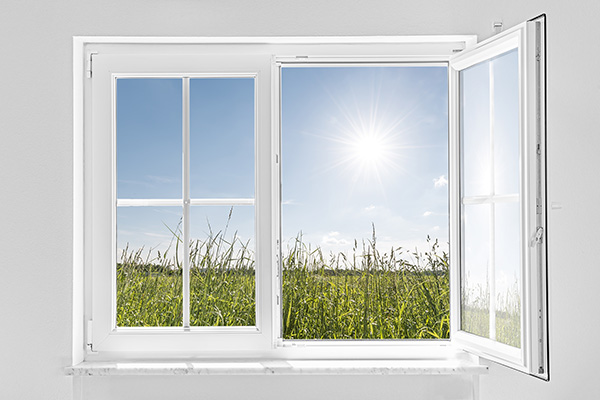Naturally ventilating a house, such as by opening doors and windows, has long been considered an effective strategy for exhausting indoor air pollutants. However, according to researchers reporting in the journal Science Advances (February 2020), that assumption may be incorrect. The researchers observed that opening doors and windows reduced air-pollutant levels, but only temporarily. Within a few minutes after closing all doors and windows, pollutant levels returned to non-ventilated (original) levels. Why? As it turns out, indoor air pollutants are not just airborne, as are many outdoor air pollutants. Indoor air pollutants are attracted to solid surfaces to which the particles can easily attach, and from which they can subsequently detach. See also: Air pollution; Indoor air pollution; Ventilation

Air in all structures, including apartment buildings, homes, and office buildings, contains chemical pollutants. The sources vary, but some common pollutant sources include building materials, furniture, and paint. Other indoor air pollutants arise from personal-care products, cleaning products, and cooking oils. Scented candles and air fresheners can also emit pollutants. Researchers in the study monitored 19 compounds known to be volatile outdoor air pollutants, as well as common indoor air pollutants. Among the compounds studied were carboxylic acids emitted from cooking and building materials, furfural from the decomposition of cellulose-containing materials such as paper products, siloxane from personal-care products, as well as ammonia, ethyl alcohol, and phenol from cleaning products. Most of the chemicals studied in a test home were detected at higher levels on solid surfaces—glass, wallboard, paint, and furniture—than in air. These surfaces essentially served as a “reservoir” from which pollutants easily entered and exited. As a result, pollutant levels in the ventilation study rebounded soon after closing the windows. See also: Ammonia; Buildings; Carboxylic acid; Cellulose; Ethyl alcohol; Phenol
According to the U.S. Environmental Protection Agency (EPA), people spend most of their time indoors, where the concentration of some pollutants may be two to five times higher than outdoor levels. Effects of indoor air pollution on the human body range from eye, nose, and throat irritation to respiratory disease, heart disease, and cancer. How can one avoid these effects? Choose safer products, such as cleaning products and paints that have low levels of volatile organic compounds (VOCs). Avoid scented products and air fresheners. Also avoid pressed wood products, which can emit formaldehyde. In the United States, look for products bearing “Safer Choice” labels, which the EPA allows for manufacturers of household, industrial, and institutional products that reduce health risks to people by preventing pollution. When doors and windows are closed, use exhaust fans and air-cleaning devices such air filters. Consider installing air exchangers, which circulate “stale” air out and bring in fresh air, in homes and workplaces to increase ventilation. See also: Air filter; Fan





